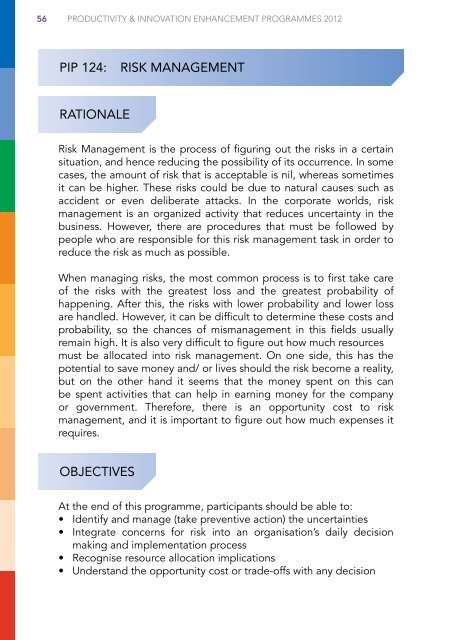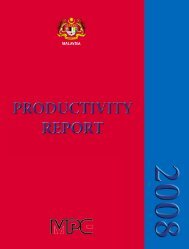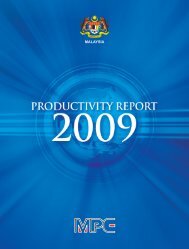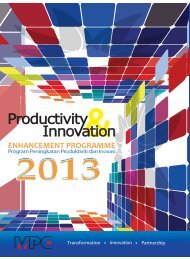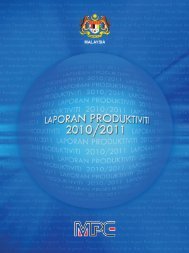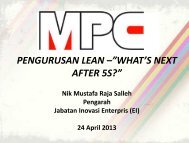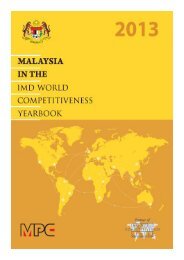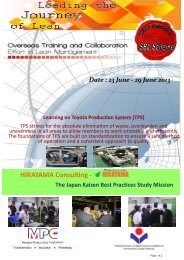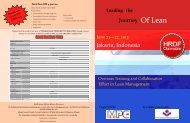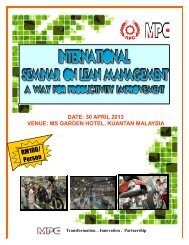PIP - Productivity Improvement Programmes Program ... - MPC
PIP - Productivity Improvement Programmes Program ... - MPC
PIP - Productivity Improvement Programmes Program ... - MPC
Create successful ePaper yourself
Turn your PDF publications into a flip-book with our unique Google optimized e-Paper software.
56<br />
PRODUCTIVITY & INNOVATION ENHANCEMENT PROGRAMMES 2012<br />
<strong>PIP</strong> 124:<br />
RISK MANAGEMENT<br />
RATIONALE<br />
Risk Management is the process of figuring out the risks in a certain<br />
situation, and hence reducing the possibility of its occurrence. In some<br />
cases, the amount of risk that is acceptable is nil, whereas sometimes<br />
it can be higher. These risks could be due to natural causes such as<br />
accident or even deliberate attacks. In the corporate worlds, risk<br />
management is an organized activity that reduces uncertainty in the<br />
business. However, there are procedures that must be followed by<br />
people who are responsible for this risk management task in order to<br />
reduce the risk as much as possible.<br />
When managing risks, the most common process is to first take care<br />
of the risks with the greatest loss and the greatest probability of<br />
happening. After this, the risks with lower probability and lower loss<br />
are handled. However, it can be difficult to determine these costs and<br />
probability, so the chances of mismanagement in this fields usually<br />
remain high. It is also very difficult to figure out how much resources<br />
must be allocated into risk management. On one side, this has the<br />
potential to save money and/ or lives should the risk become a reality,<br />
but on the other hand it seems that the money spent on this can<br />
be spent activities that can help in earning money for the company<br />
or government. Therefore, there is an opportunity cost to risk<br />
management, and it is important to figure out how much expenses it<br />
requires.<br />
OBJECTIVES<br />
At the end of this programme, participants should be able to:<br />
• Identify and manage (take preventive action) the uncertainties<br />
• Integrate concerns for risk into an organisation’s daily decision<br />
making and implementation process<br />
• Recognise resource allocation implications<br />
• Understand the opportunity cost or trade-offs with any decision


